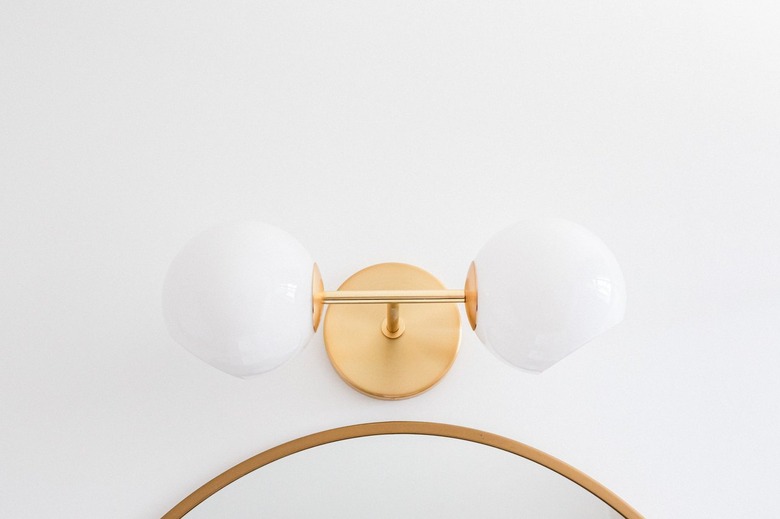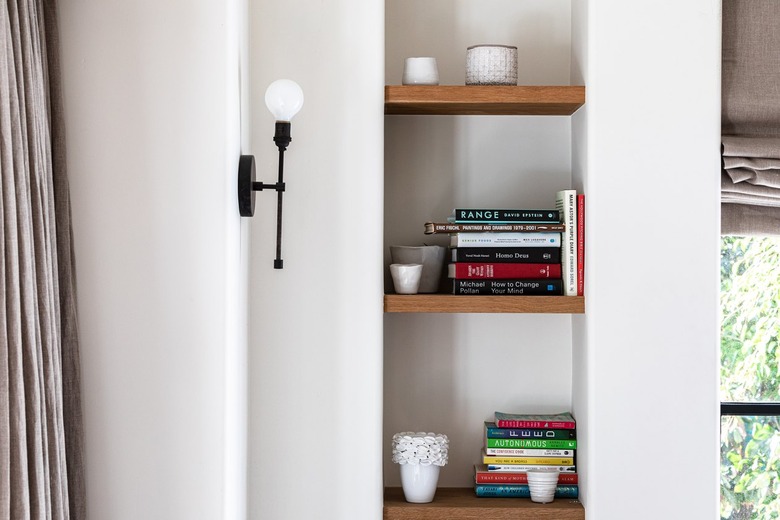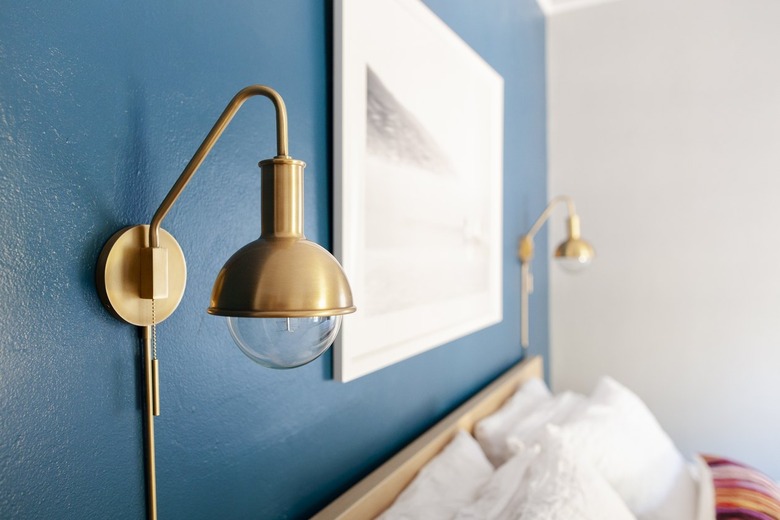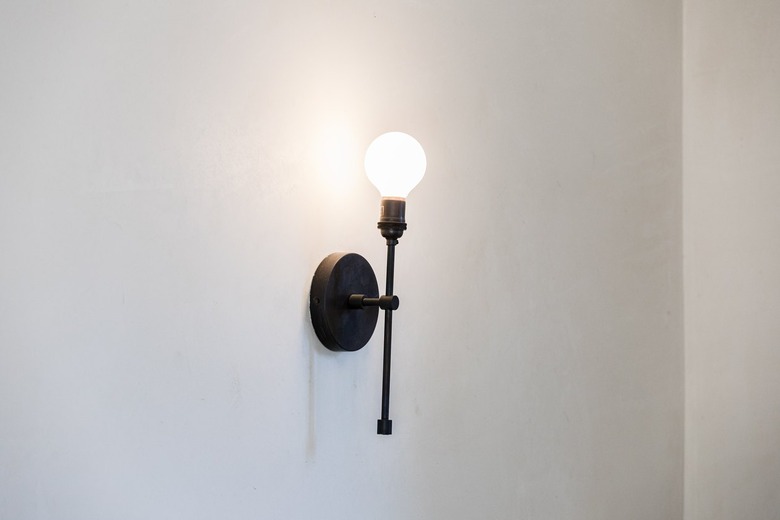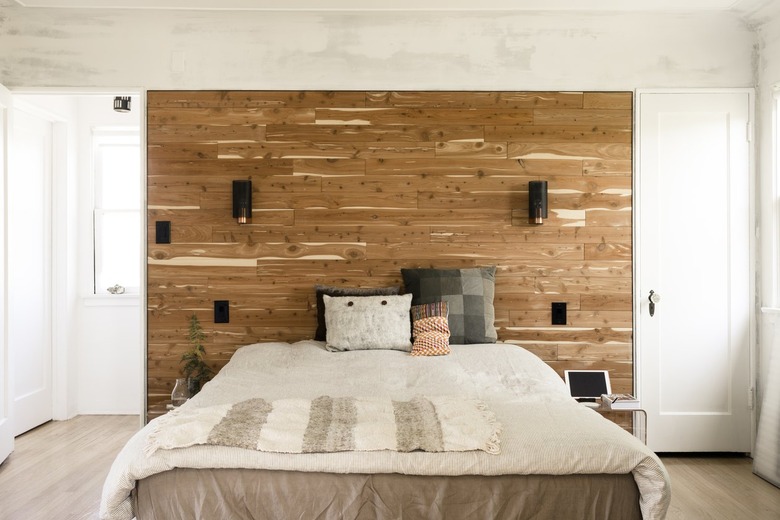Wall Sconces: Types And How To Choose
We may receive a commission on purchases made from links.
Adding wall sconces can solve two problems at once. They produce different types of light, providing both general illumination and ambient light (like in a dining room or living room). These types of wall lights can shine a light on specific tasks, such as reading in the bedroom or prepping a meal in the kitchen. Plus, they illuminate stairs and hallways to make them safer.
Wall sconces are available in so many styles, from traditional to ultra-modern, so they can reinforce any design theme. You can find wall sconces that look like candles (a nod to the original wall sconces, which used candlelight), small lamps, or even lanterns. There are those that are installed flush to the wall and models that swing out from it. Finishes include brushed and polished metal, satin nickel, ceramic, glass, and more.
How Much Do Wall Sconces Cost?
How Much Do Wall Sconces Cost?
Individual wall sconces can cost anywhere from $30 to $300 and up. They are usually installed in multiples, so you may need two to flank a fireplace or illuminate a piece of art, and it may take three or four to light a long hallway. Some wall sconces are hardwired into the home's electrical system, so you may need to hire an electrician to help install them. Expect to pay a pro $300 to $400 to install two hardwired wall sconces.
Types of Wall Sconces
Types of Wall Sconces
While there are hundreds of wall sconce designs, they all can be separated into two broad categories: those that are hardwired to the home's electrical system and simple plug-in models. There are also some that can be installed either way.
Hardwired Wall Sconces
Wall sconces that are wired into the home's electrical system provide a finished appearance and the convenience of wall-switch control. While installation will cost more for a hardwired fixture, once the electrical box is installed within the wall, you may be able to DIY future fixture replacements. A single wall switch can be wired to operate a number of sconces at once. One or more sconces can also be controlled by a pair of three-way switches in different locations.
Pros
- Neat, finished appearance with no visible wires
- Can be placed anywhere with no need for an electrical outlet nearby
- A single switch can control multiple wall sconces
Cons
- Requires a professional electrician for installation
- Can't be moved without making repairs to the wall
Plug-In Wall Sconces
Sometimes referred to as wall lamps, plug-in sconces come with a cord and require an electrical outlet nearby. As long as a power source is available, they can be moved easily without too much damage to the wall. And if you plug a sconce into a switch-controlled electrical outlet (these are common in bedrooms for reading lights), you can turn it on and off with a wall switch.
Pros
- Simple DIY installation
- Same-day purchase and installation
- No need to hire a professional electrician
- Easy to move
Cons
- Visible cord
- Must be installed near an electric outlet
- Will take up outlet space
- Can't be controlled with a wall switch unless plugged into a switched outlet
Wall Sconce Materials
Wall Sconce Materials
This type of lighting fixture consists of a backplate that connects it to the wall or to an electrical box, an arm that connects the backplate to the lighting fixture, and the light fixture itself. Some arms are only a couple of inches long, while other sconces have a swing arm that allows the light source to be placed a few inches to a few feet away from the wall.
The backplate and arm are usually polished or rubbed metal, but they can also be plastic or ceramic. Shades can be fabric for a traditional look, but they can also be glass, ceramic, or metal. In some cases, the light bulb is completely hidden, but in others, it is on full display, which means the wall sconce requires specially shaped bulbs. Wall sconces generally do not require any special maintenance aside from general dusting and cleaning.
Wall Sconce Cost Factors
Wall Sconce Cost Factors
Wall sconce prices vary from $30 to several hundred dollars, depending on a few key factors.
- Number of wall sconces: Wall sconces are usually sold individually, but most installations require multiple fixtures.
- Installation method: Hardwired wall sconces may require installation by an electrician. Plug-in sconces often mount to the wall with a mounting plate screwed into wall studs or drywall anchors.
- Ease of installation: Some wiring projects are more difficult than others because of the difficulty of running wiring through the walls. A full installation involving a new electrical box and circuit wiring may take two or three hours, but some will take longer. Electricians charge about $50 to $100 per hour. Mounting a plug-in sconce takes just a few minutes.
How High to Place Wall Sconces
How High to Place Wall Sconces
Where you place new wall sconces will depend on how you plan on using them. Wall sconces can be used for general illumination, task lighting, or accent lighting. Here are some guidelines:
- Entryways: 66 to 72 inches above the floor
- Living room, dining room, and the like: 66 to 72 inches above the floor
- Bedroom: 30 to 36 inches above a nightstand (also applies to desks)
- Kitchens (task lighting): 24 to 30 inches above the countertop
- Bathrooms: 65 to 66 inches above the floor or centered around a vanity mirror
- Hallways: 66 to 72 inches above the floor, about 6 to 10 feet apart
- Outdoors: 72 inches above the ground, about 10 feet apart
- Decorative accent: For wall washing where the light is projected downward, about 72 inches above the floor. For uplighting to project light onto the ceiling, about 12 to 20 inches from the ceiling.
How to Choose the Right Wall Sconce for Your Home
How to Choose the Right Wall Sconce for Your Home
Wall sconces give you the opportunity to add a light source without taking up valuable tabletop space. Because they are available in so many styles and materials, wall sconces are a good way to reinforce a design theme. Because prices vary widely, you can find wall sconces to fit your budget.
